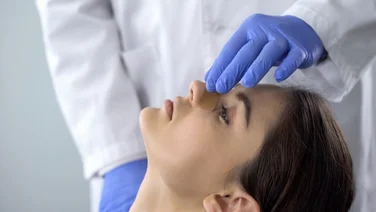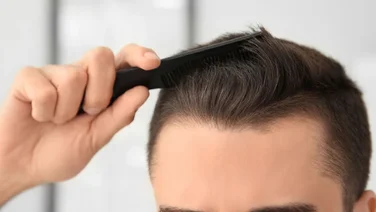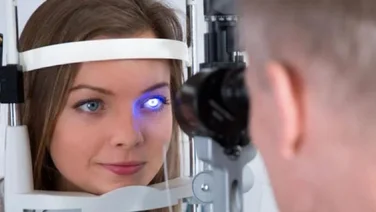Laser hair removal is a cosmetic procedure that uses concentrated light to target and destroy hair follicles, significantly reducing unwanted hair growth. This treatment is for men and women looking for a solution to remove hair from various body areas, including the face, legs, arms, underarms, bikini line, back and chest.
Professional laser hair removal minimises the need for regular shaving or waxing, making it a convenient option for maintaining smooth, hair-free skin.
Benefits of Laser Hair Removal
- Long-lasting results: Laser hair removal offers a longer-lasting reduction in hair growth compared to traditional methods like shaving or waxing. While the effects are not permanent, most people find the hair removal lasts for several months or even years. The hair that grows back afterwards is usually lighter and finer.
- Time and cost efficient: While there is an initial investment for laser hair removal, it can prove cost-effective over time compared to the ongoing expenses of waxing, shaving, or other temporary hair removal methods.
- Quick and convenient: Laser hair removal sessions are relatively quick, often taking less than an hour depending on the size of the treatment area. You can resume your normal activities immediately after the procedure.
- Versatility: Laser hair removal is effective for almost all body areas, from small sections like the upper lip to larger areas like the legs or back, offering a comprehensive solution for unwanted hair. The only areas that aren’t suitable for laser removal are eyelids and eyebrows, and skin that has been tattooed.
Risks of Laser Hair Removal
Like any procedure, laser hair removal has some risks, though you can reduce these if you follow the instructions that you’re given before and after your treatment. The risks can include:
- Skin irritation: This can include redness and swelling. It usually only lasts a few hours.
- Changes to skin colouring: Laser hair removal might darken or lighten the skin area that is treated, either temporarily or permanently. It mainly affects people who don’t avoid sun exposure before or after treatment, or who have darker skin.
- Rare side effects: Very occasionally, laser hair removal can cause changes to the skin such as blistering, crusting or scarring. Also rarely, it might cause excessive hair growth in treated areas (this is more likely with dark skin), or cause the treated hair to turn grey.
Who Is Laser Hair Removal Suitable For?
Laser hair removal is suitable for anyone seeking a long-term solution to unwanted hair. It uses state-of-the-art lasers designed to be safe and effective for different skin tones and hair types. Unlike temporary methods such as shaving or waxing, laser hair removal targets the hair follicles directly, using laser energy to target them in order to delay or reduce future growth.
Laser hair removal tends to be most effective on white skin with dark hair, but modern techniques are increasingly suitable for a wide range of skin tones and hair types.
What Is The Laser Hair Removal Process?
- Initial consultation: Book a consultation with a qualified specialist to discuss your hair removal goals, skin type, and medical history. The specialist will evaluate the best laser technology for your needs and provide an overview of the treatment plan.
- Customised treatment plan: Based on your consultation, the specialist will create a personalised treatment plan outlining the number of sessions required, expected results, and any pre-treatment instructions (such as avoiding sun exposure and certain hair removal methods).
- Hair removal sessions: Laser hair removal usually requires two to six sessions, to effectively target hair at different growth stages. The spacing of the sessions depends on which areas are being treated. You’ll be given goggles to protect your eyes and you may have a cooling gel applied to the skin. Each session typically takes less than an hour, depending on the size of the treatment area.
- Post-treatment care: Follow any post-treatment care instructions provided by your specialist. Most people can resume normal activities immediately. You’ll probably be advised to avoid sun exposure and tanning beds for around six weeks.






